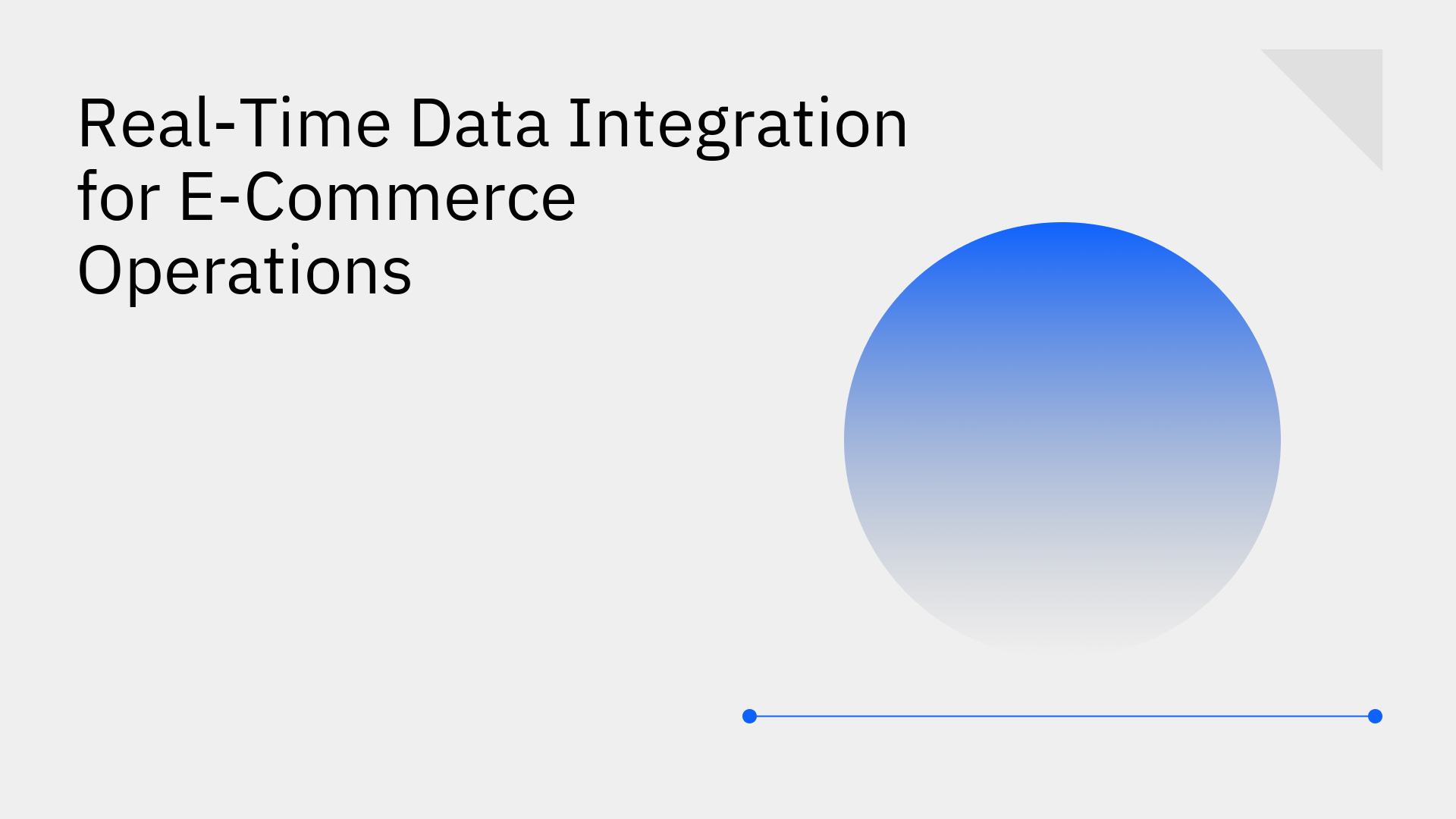
In the fast-paced e-commerce market, speed is everything. The traditional method of processing data in batches often overnight is no longer sufficient. This latency creates a gap between when an event occurs and when your business can act on it, leading to missed opportunities and operational inefficiencies. Real-time data integration for the e-commerce industry closes this gap by synchronizing information across your entire tech stack the moment it changes.
The move from static to dynamic data is a fundamental shift, allowing businesses to react instantly to customer behavior and market fluctuations [1].
This isn't just an incremental improvement; modern real-time data pipelines provide a significant competitive advantage over slower, batch-based methods [2]. This article will explore the transformative benefits of real-time data, the key components of a successful integration strategy, and how to implement it to drive growth in your e-commerce operations.
Integrating data in real time is not just a technical upgrade; it's a strategic imperative that unlocks significant advantages across your entire business. Companies that operate as "real-time businesses" don't just perform better they fundamentally outpace their competition. A study by MIT CISR found that top-quartile real-time businesses achieve over 50% higher revenue growth and net margins than their bottom-quartile peers [3].
In e-commerce, a personalized customer journey is key to building loyalty. Real-time data allows you to respond instantly to customer actions, creating highly relevant experiences.
Few things are more damaging to an e-commerce brand than overselling a product or showing an item as out-of-stock when it's available. These issues stem directly from disconnected systems and data latency. Real-time integration solves this by creating a single source of truth for your inventory.
By syncing inventory levels in real time across your Shopify storefront, ERP, and any other sales channels, you eliminate stock discrepancies and prevent lost sales [5]. An effective real-time inventory management system automates key fulfillment processes:
Real-time data empowers your teams to move from reactive to proactive decision-making. Instead of analyzing last month's performance, they can optimize for what's happening right now.
Platforms like Stacksync make this possible by providing a reliable, real-time sync between your e-commerce platform and your ERP. For example, you can optimize e-commerce with real-time Shopify-NetSuite sync to ensure financial reporting always reflects the current state of the business.
Building a robust real-time data ecosystem requires a foundation built on sound architectural principles and powerful technology. The goal is to create a system that is not only fast but also reliable and scalable.
One-way data pushes from one system to another inevitably lead to data silos and discrepancies. True integration requires two-way, or bidirectional, synchronization. This ensures that when a record is updated in either system—whether a customer address in your CRM or an order status in your ERP—the change is instantly reflected in the other. This eliminates conflicting information and the need for manual data reconciliation. Stacksync was built from the ground up to provide real-time, two-way data synchronization, ensuring all your systems remain perfect mirror images of one another.
As your e-commerce business grows, your data volume will explode. Your integration platform must be able to handle millions of records and high-frequency updates without faltering. Key features to look for include:
It's crucial to understand how different real-time data sync technologies compare in terms of performance and reliability to choose a solution that can grow with you.
A modern e-commerce stack is a complex web of specialized applications, including e-commerce platforms like Shopify, ERPs like NetSuite, CRMs like Salesforce, and various marketing and support tools. A capable integration solution must offer pre-built connectors for these key systems. This no-code approach drastically simplifies setup, ensures compatibility, and allows you to connect your entire stack without costly custom development. Understanding the features and benefits of a dedicated e-commerce ERP integration is the first step toward building a unified operational backend.
The theoretical benefits of real-time data are compelling, but real-world examples illustrate its transformative power.
Ukrainian retailer Avrora struggled with disconnected data and manual reporting that took days to compile. By implementing a unified analytics system with real-time data pipelines, they achieved remarkable results. Report generation time dropped from half a day to just minutes, promotional sales increased by 10% in the first month, and monthly website users surged from 500,000 to 1.5 million [6].
For one e-commerce business, managing massive data volumes was a major challenge. By implementing a modern data integration platform to automate data ingestion into their warehouse, they achieved significant improvements. The project resulted in higher data quality, faster delivery of insights to business users, and enhanced collaboration across teams [7].
The underlying infrastructure that powers real-time processing is more accessible than ever. Industry leaders like HubSpot, Robinhood, and Siemens rely on scalable cloud platforms like AWS to build innovative, data-driven solutions for millions of customers worldwide [8]. This demonstrates that the technology to operate in real time is mature, proven, and ready for businesses of all sizes.
In today's competitive landscape, real-time data integration is no longer optional—it is essential for optimizing operations, delighting customers, and driving sustainable growth. By unifying your data across all systems, you empower your teams with the information they need to make smarter, faster decisions.
Stacksync is a powerful platform designed to solve this exact challenge for e-commerce businesses. With true real-time, bidirectional synchronization and a library of over 200 pre-built connectors, Stacksync allows you to connect your entire e-commerce stack in days, not months. Our no-code setup eliminates the need for complex and costly development cycles, allowing you to focus your engineering resources on building your core business.
Ready to unlock the power of your data? Explore how Stacksync for E-Commerce can transform your operations and schedule a demo with one of our experts today.